There's 4 large beds in my garden, each about 6 feet wide by 22 feet long for a total of about 540 square feet of bed space. Each bed is nearly 2 feet high. The boxes are filled with regular garden soil, not potting soil. The beds are irrigated with 1/4-inch drip tubing with in-line emitters spaced 6 inches apart and the lines are laid approximately 9 inches apart. The garden is surrounded by a 6 foot tall deer fence reinforced with hardware cloth a ground level to keep rabbits out. (Nothing keeps the rodents out, boohoo.)
Let's start with the first year in the rotation. I'll be looking at a hypothetical single bed as it goes from one year to the next. I hope it's not confusing that I use pictures from from more than one year to illustrate what I try to grow through the course of one year in one bed. Not every year is the same because vegetables fall on and off the grow list from year to year. What I want to illustrate is where I would be growing something if I happened to be growing it.
In January I sow the entire bed or nearly so with a cover crop.
 |
| January |
I usually make my own mix based on
Kodiak mustard along with some annual grasses, peas, and favas. Sometimes I use a mix from Renee's Garden Seeds that contains
Winter Rye, Hairy Vetch, Daikon Radish, Rapeseed, Purple Top Turnip and Austrian Winter Peas. Either mix works well.
The birds like to munch the emerging seedlings so I cover the entire bed with
Agribon row cover fabric.
 |
| January |
The birds would continue to graze on the cover crop if I didn't keep it covered as long as possible.
 |
| March |
At some point the cover crop can no longer be restrained by the fabric so it gets set free. At this point the birds can't do much damage. When I mix peas into the cover crop I like to find the tender tops of the pea plants and harvest them as a green vegetable. The key to harvesting a tender pea shoot is to cut it so that it doesn't have a tendril that hasn't started to curl up because the main stem in the area of a curled tendril will already be tough. A little curve is ok, but avoid the tendrils that want to cling to something already.
I cut down the cover crop in April using hedge shears. If things were not in a raised bed I would probably opt for a string trimmer.
 |
| April |
There's 2 options at this point, either cover up things up right away and let the greens rot before digging them in or dig them in right away and let them rot in the soil.
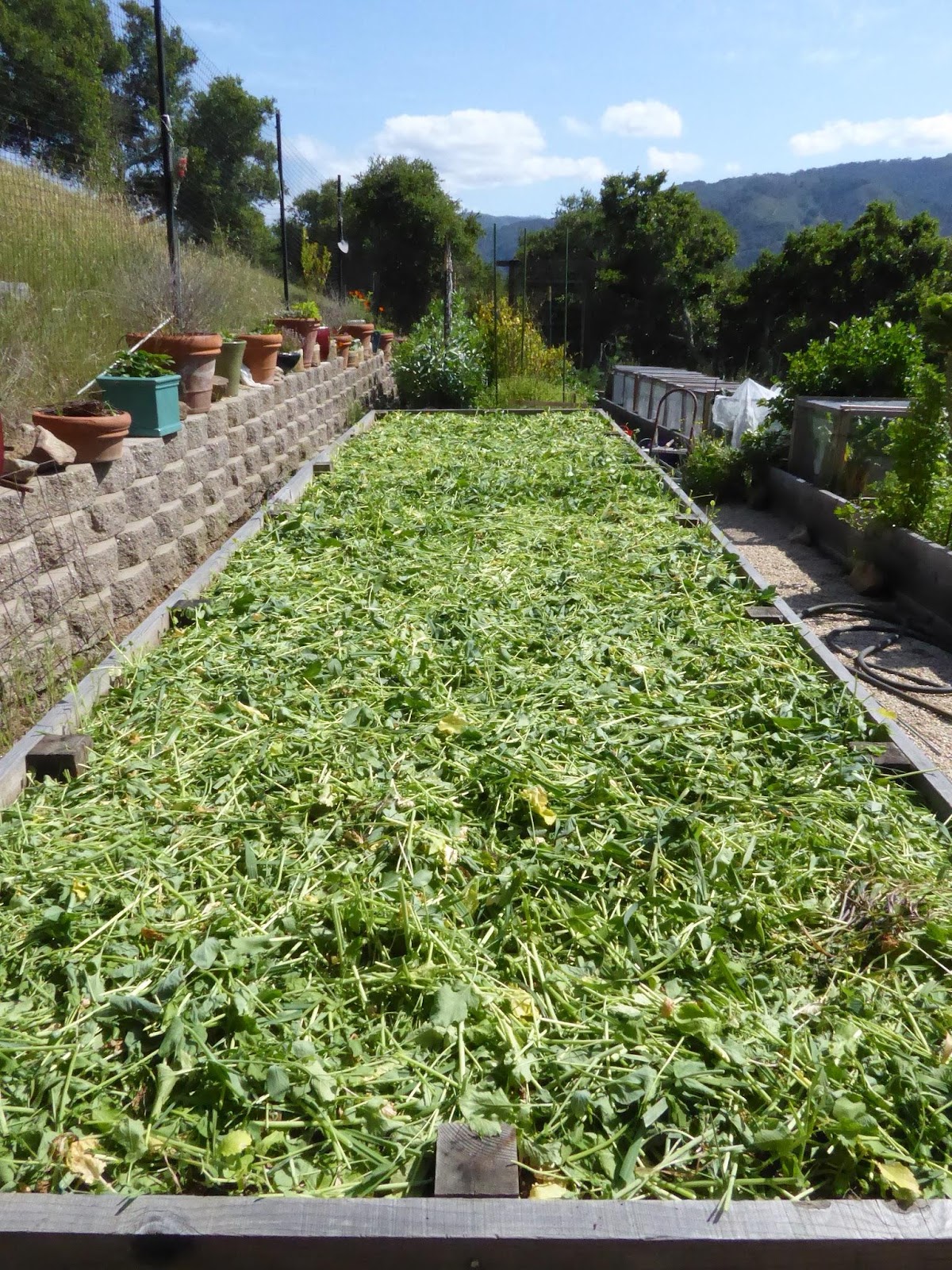 |
| April |
I usually opt to dig them in right away to just get the process over with.
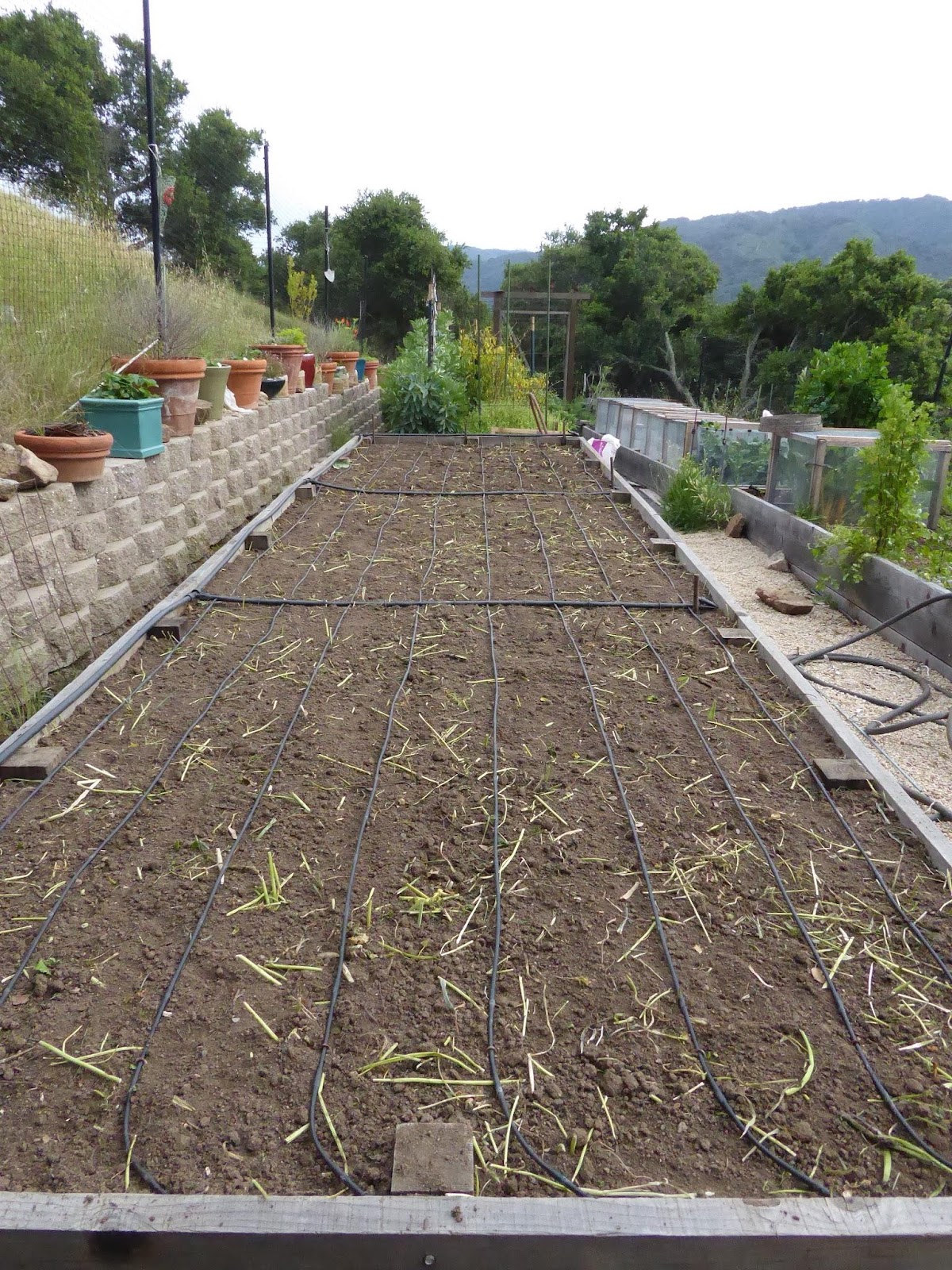 |
| April |
And then I mulch the entire bed with cardboard. The worms and other critters in the soil get to work and the greens disappear in a matter of weeks. Another advantage to digging the greens in right away is that they decompose more quickly in the soil than on top of it, even when they're covered with cardboard.
I aim to plant my tomatoes and peppers sometime near June 1. First I dig in various amendments to the soil including a year's worth of egg shells that I pulverize in my Vitamix blender. Other amendments include compost, organic soybean meal, feather meal, fishmeal, rock phosphate, kelp meal, and azomite or glacial rock dust. I never use a tiller, I just turn the soil over once, break up the clods and then rake the top smooth. Then I set up a trellis along the north side of the bed to support the tomatoes. The trellis is made of T-posts and concrete reinforcing mesh which I attach to the posts using cable zip ties.
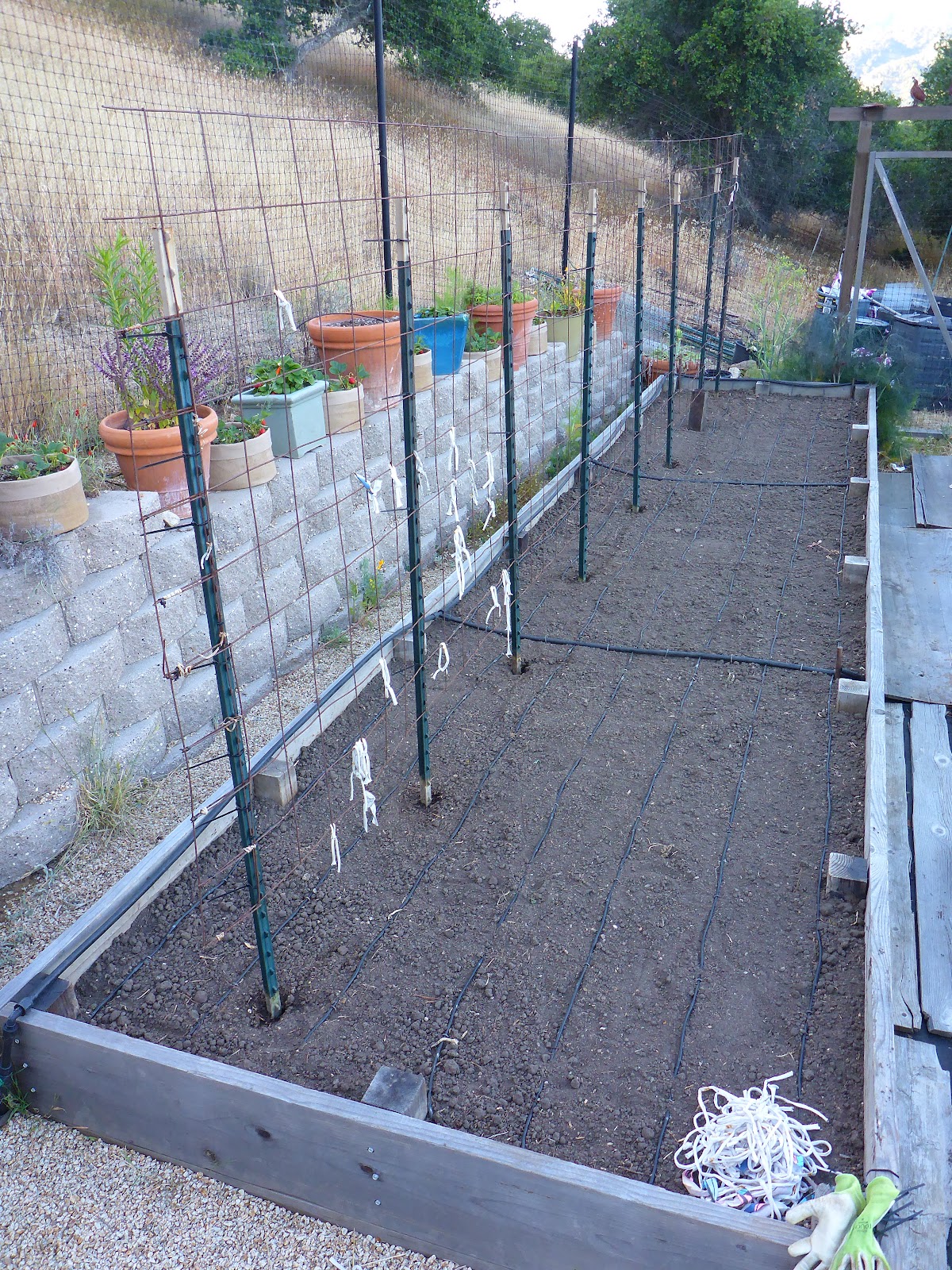 |
| Memorial Weekend |
Each plant gets a sprinkle of
Mykos mycorrhizal inoculant in the planting hole and then a drench of
Azos beneficial bacterial inoculant. The pepper plants in particular respond well to the inoculants. Before I started using the inoculants I had problems with peppers becoming sunburned because of poor leaf coverage. The inoculated plants grow more vigorously and have larger leaves and I rarely have problems with sunburned peppers anymore.
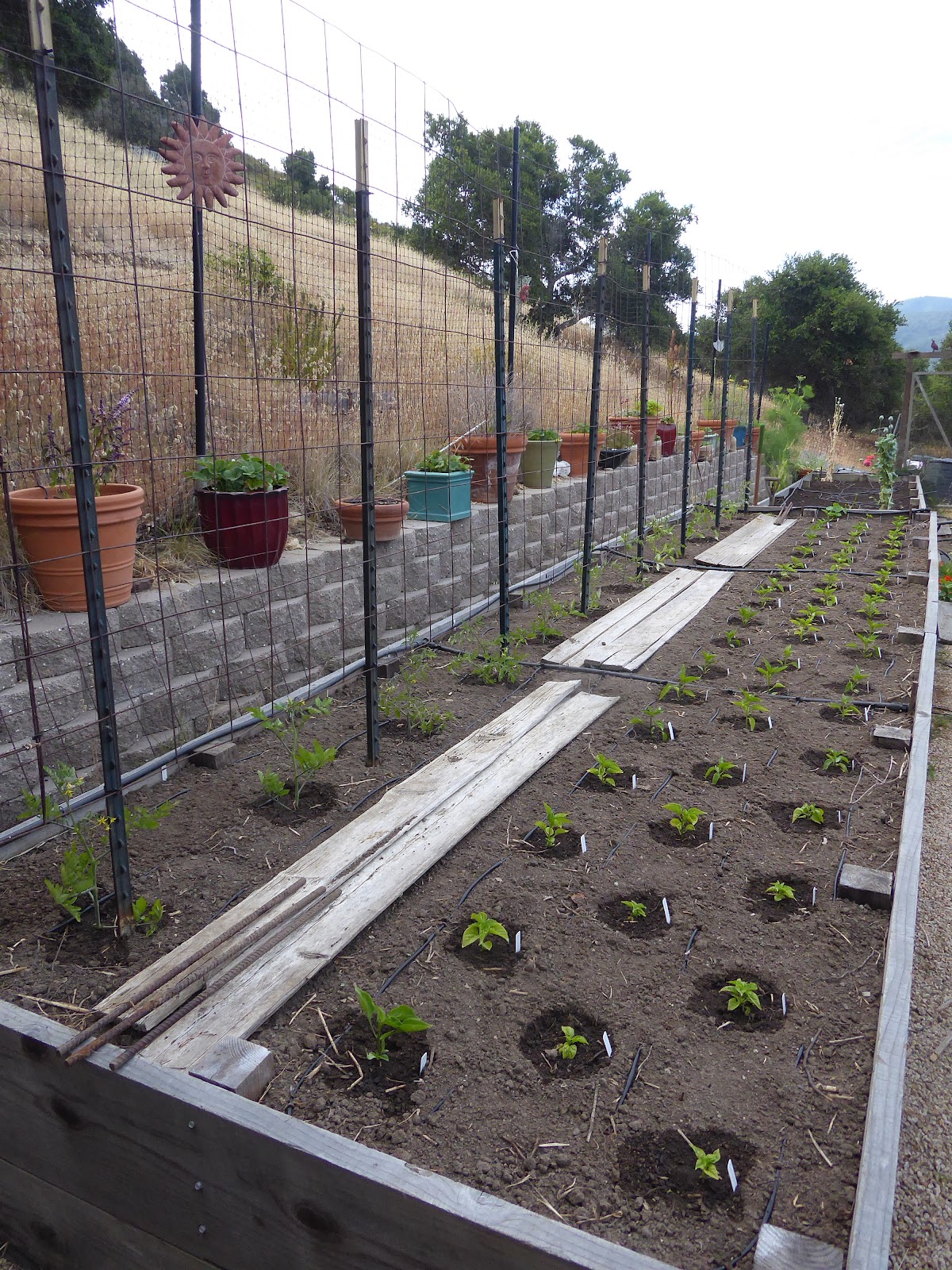 |
| Memorial Weekend |
Tomato and pepper plants grow very quickly at this time of year. I tie the tomato vines to the trellis using strips cut from old cotton t-shirts. I prune a lot of the suckers and remove a lot of leaves to improve air circulation and allow more light into the interior of the plants. I also like to do a prophylactic spray of an organic fungicide once or twice in the first month after the plants take off. Foliar diseases always seem to crop up some time during the growing season and I've found that spraying before the diseases show up reduces the incidence and severity of infections. Occasionally I'll treat them later in the season if foliar diseases start to appear.
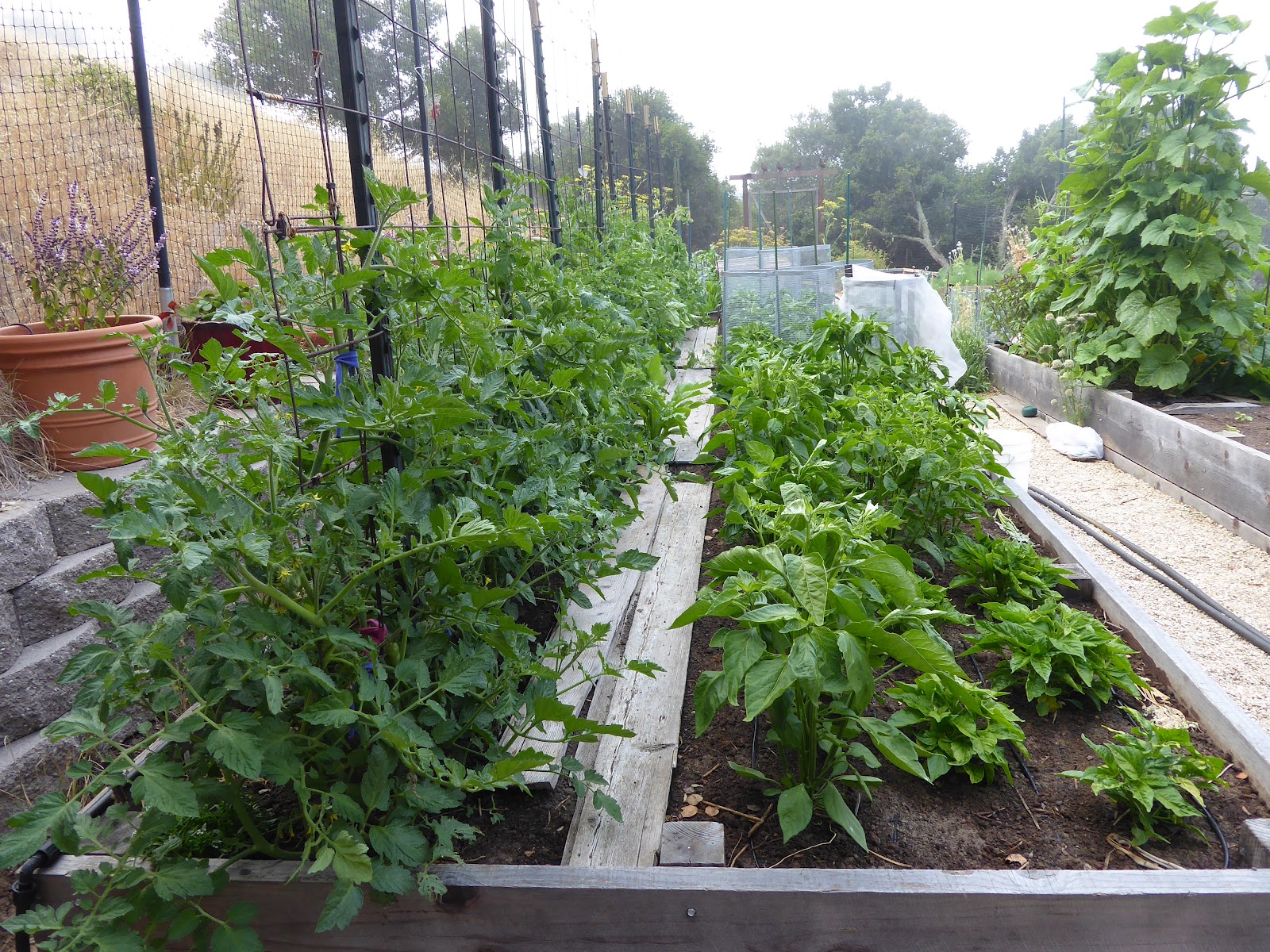 |
| July 15 |
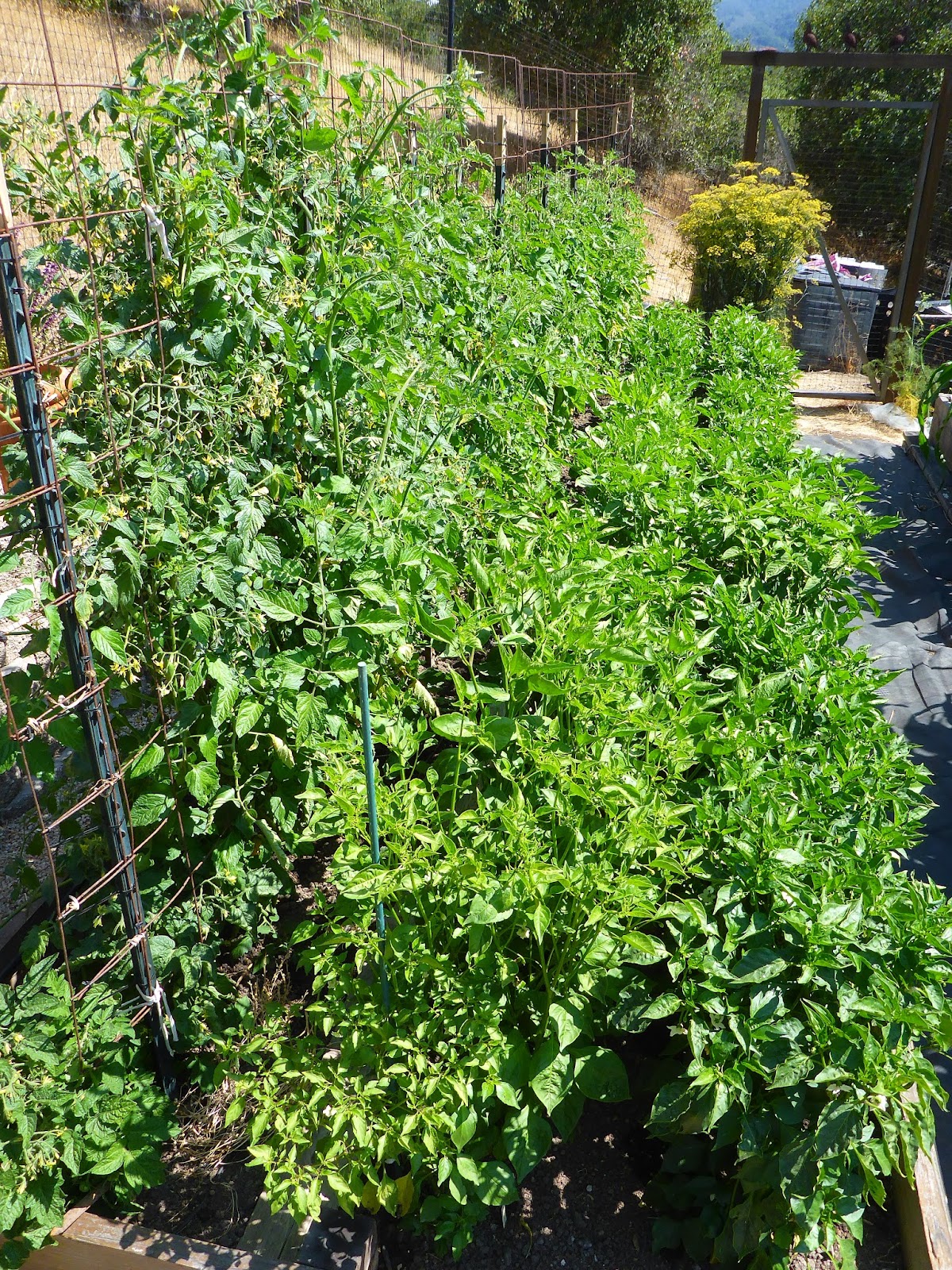 |
| August |
The first small fruited tomatoes start to ripen in August but the bulk of my tomato harvests are in September and October. You can see in the photo below how I've removed leaves and suckers from the bottom of the plant. I continue to remove leaves and suckers through most of the growing season and especially target any growth that looks like it is succumbing to a disease.
 |
| August |
By the end of the season I just let the plants go and don't worry so much about dead and dying foliage. The pepper plants don't need so much trimming and training, although some might need staking. The cages around the pepper plants in the photo below were covered with fabric early in the season when the plants were in bloom to isolate the plants for seed saving.
 |
| December |
 |
| December - Early favas and mustard. |
I may start removing plants as early as November in some years and other years I may not get around to it until the end of the year. I can sow a cover crop as soon as a space is cleared or I can plant some fava beans or I may just cover up the space with a cardboard mulch until I can get around to planting something.
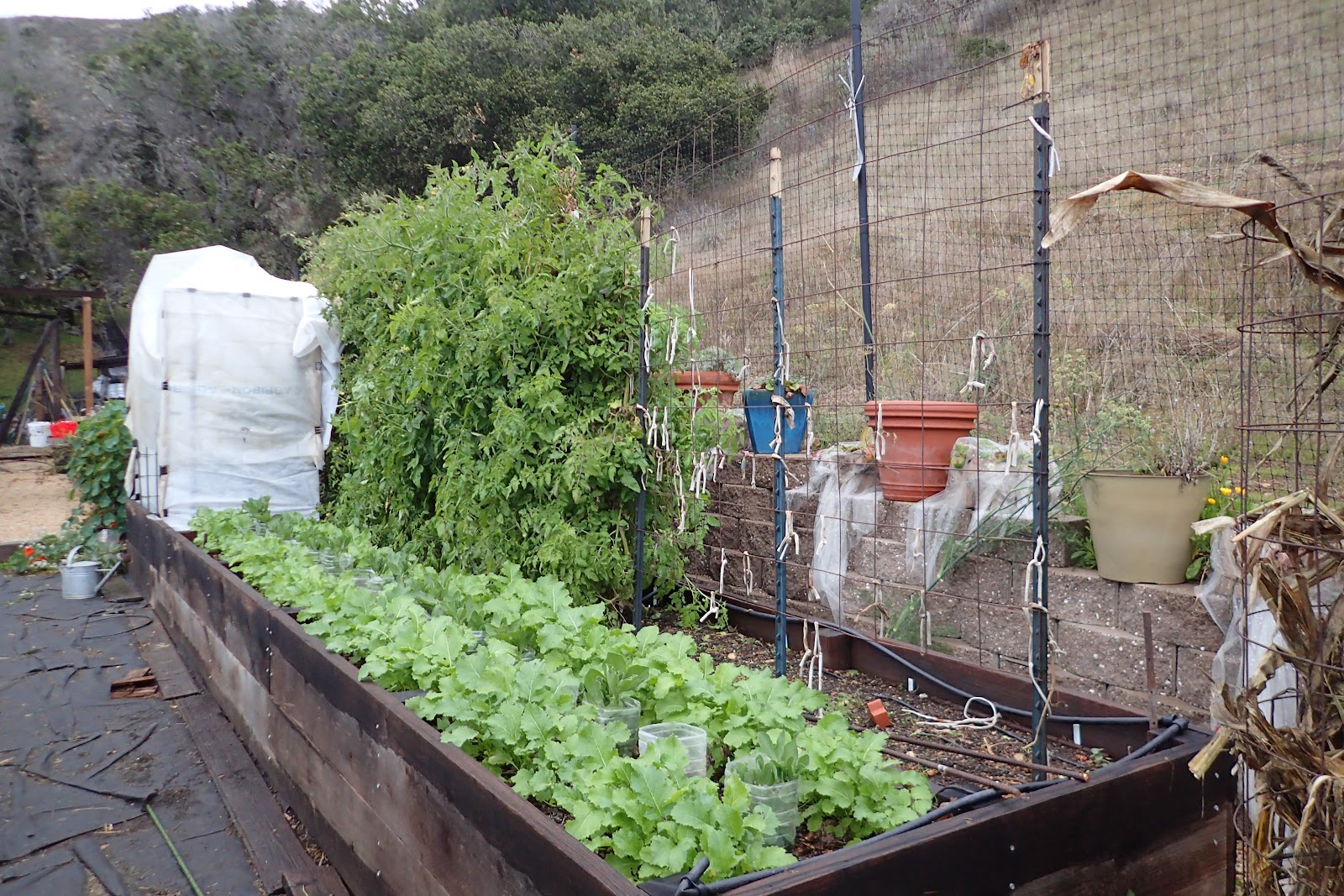 |
| December |
Some peppers are tolerant of cold weather and may have peppers ripening as late as December, January or February. I group those peppers in one corner of the bed and provide some frost protection and usually let them grow on through the next year.
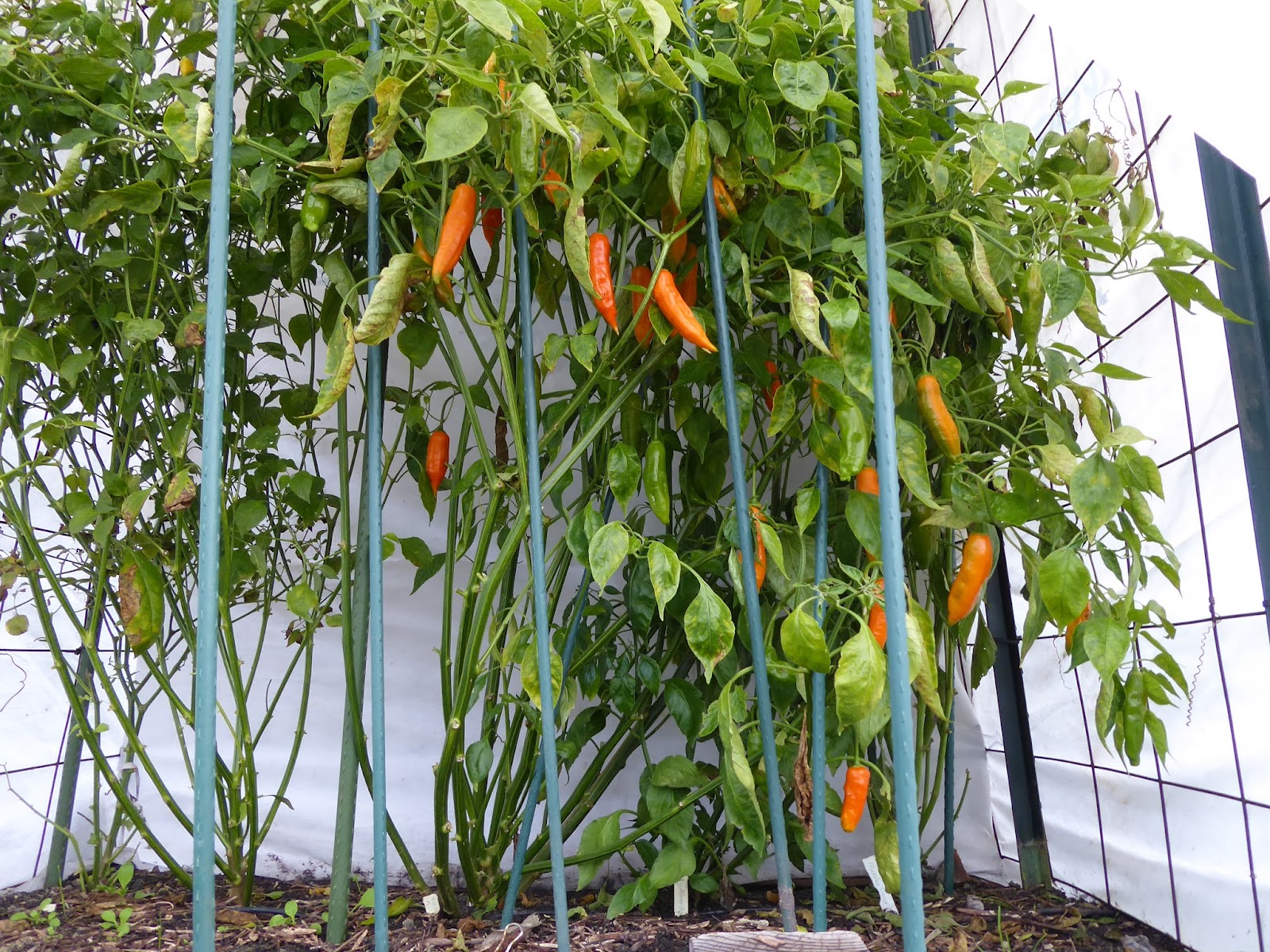 |
| December |
And now for a few of my favorite tomatoes and peppers.
Piccolo Dattero is an Italian hybrid cherry tomato. They are one of the tastiest cherry tomatoes that I've ever grown with a nice balance of sweet and tart. They hold well on the vine and rarely ever split. The plants are vigorous but not too much so and they are very disease resistant.
Sweet Gold is another hybrid with pretty good disease resistance. The flavor is great and fruits resist cracking.
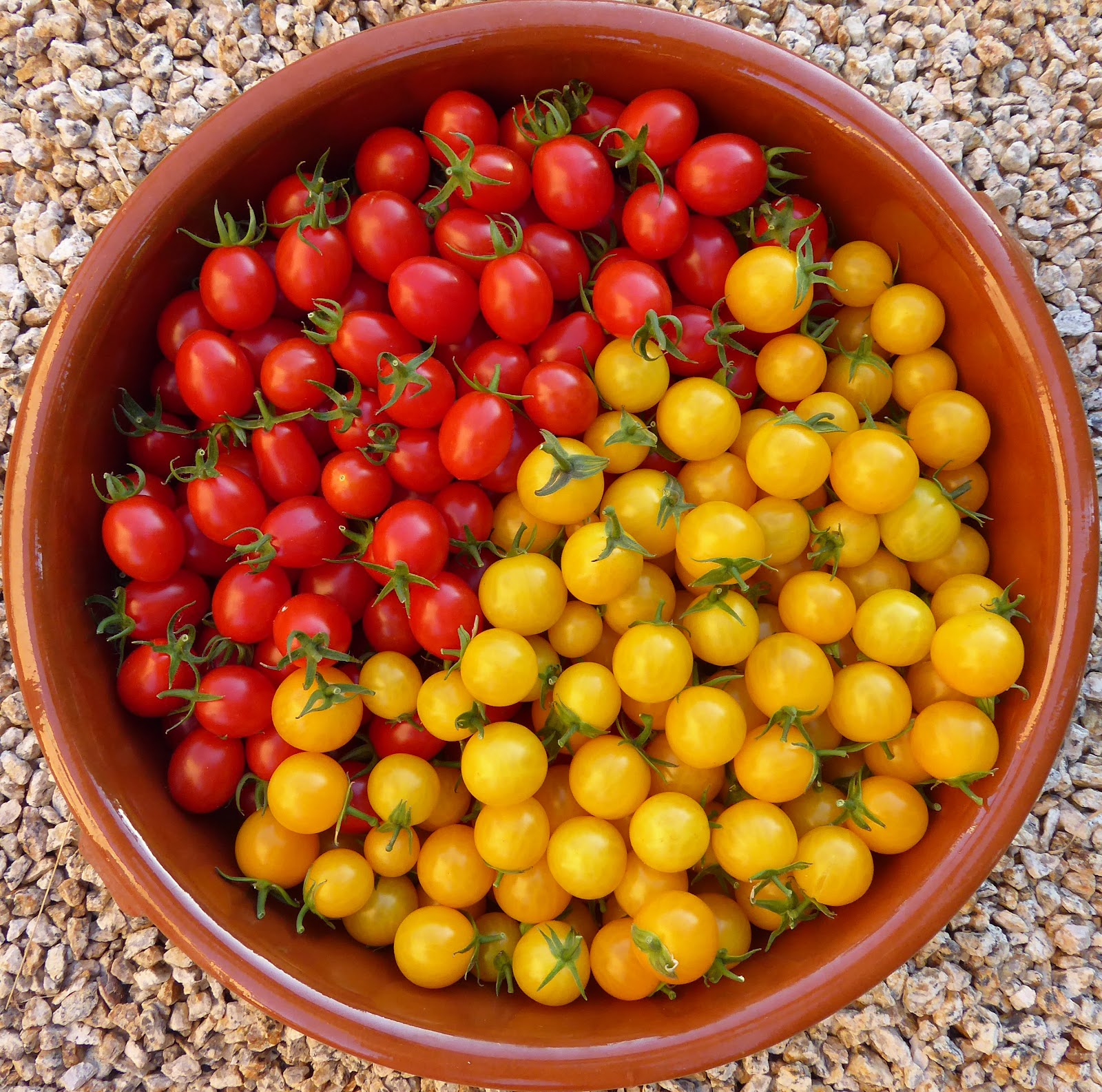 |
| Piccolo Dattero and Sweet Gold |
Jaune Flamme is a French heirloom that produces small tomatoes with a big flavor. The color is gorgeous too, the inside of the tomato is usually blushed with pink. It produces over a long season, usually one of the first to ripen and one of the last as well.
Marzano Fire is a new open pollinated paste tomato bred by Fred Hempel at Baia Nicchia Farm in Sunol, California. It looks like a typical Marzano tomato but it has gold stripes. It makes great sauce, puree, and paste but it is also very good eaten fresh.
 |
| Jaune Flamme and Marzano Fire |
Chianti Rose is a cross between Brandywine and an Italian heirloom. It's a nice large pink beefsteak type with a rich flavor. It has far more flavor than any Brandywine tomato that I've ever grown. Brandywine tomatoes resent the cooler climate in my garden and never develop a good flavor but Chianti Rose just shrugs off the cool weather.
Pantano is an Italian red beefsteak that I tried on a whim one year and I found it to be a winner. It produces very large fruits with excellent flavor and even though it's originally from Rome it seems to do just fine in the cooler climate here.
Mavritanskite is a Latvian heirloom with dark brownish flesh, oftentimes with greenish shoulders (which some tomato connoisseurs to be a sign of superior flavor) and full flavor. It is a little more disease prone but the great flavor makes up for that.
 |
| Chianti Rose, Pantano, and Mavritanskite |
I love fire roasted sweet peppers and I've grown a lot of peppers in search of the best and
Ajvarski is the best yet. This heirloom from eastern Macedonia has fruits that are large and thick fleshed. The shape being straight and smooth without deep indentations or curves makes them easy to roast and peel. But most important the flavor is fabulous.
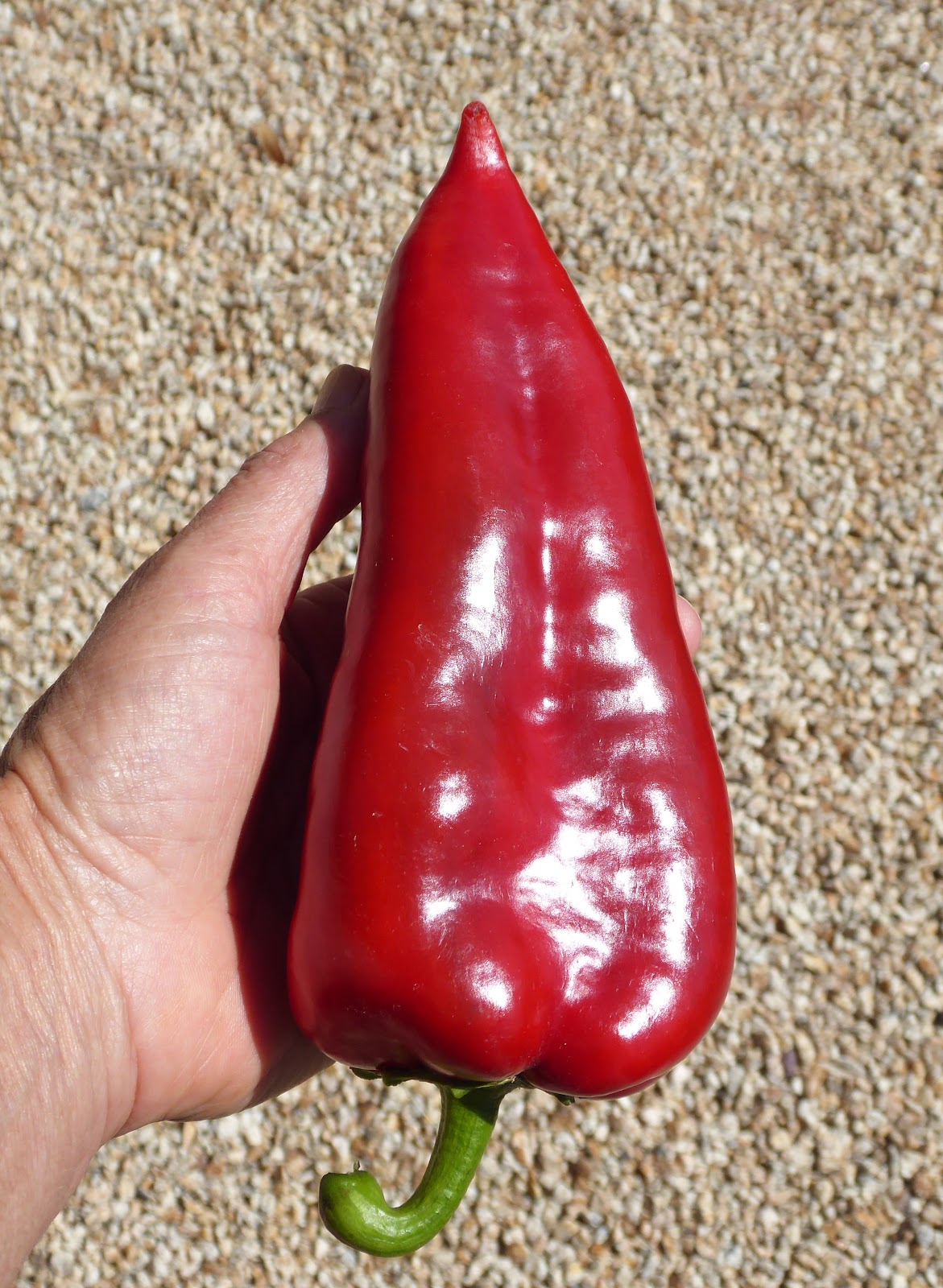 |
| Ajvarski |
Florina is my next favorite roasting pepper, second to Ajvarski only because it's shape makes it a little more difficult to roast evenly and its flesh is less thick. It does seem to have one advantage to Ajvarski though, it seems to be more resistant to powdery mildew. This is an heirloom from Greece and I'm very fortunate to have acquired the seeds in a trade with another gardener because the seeds are not available in the US.
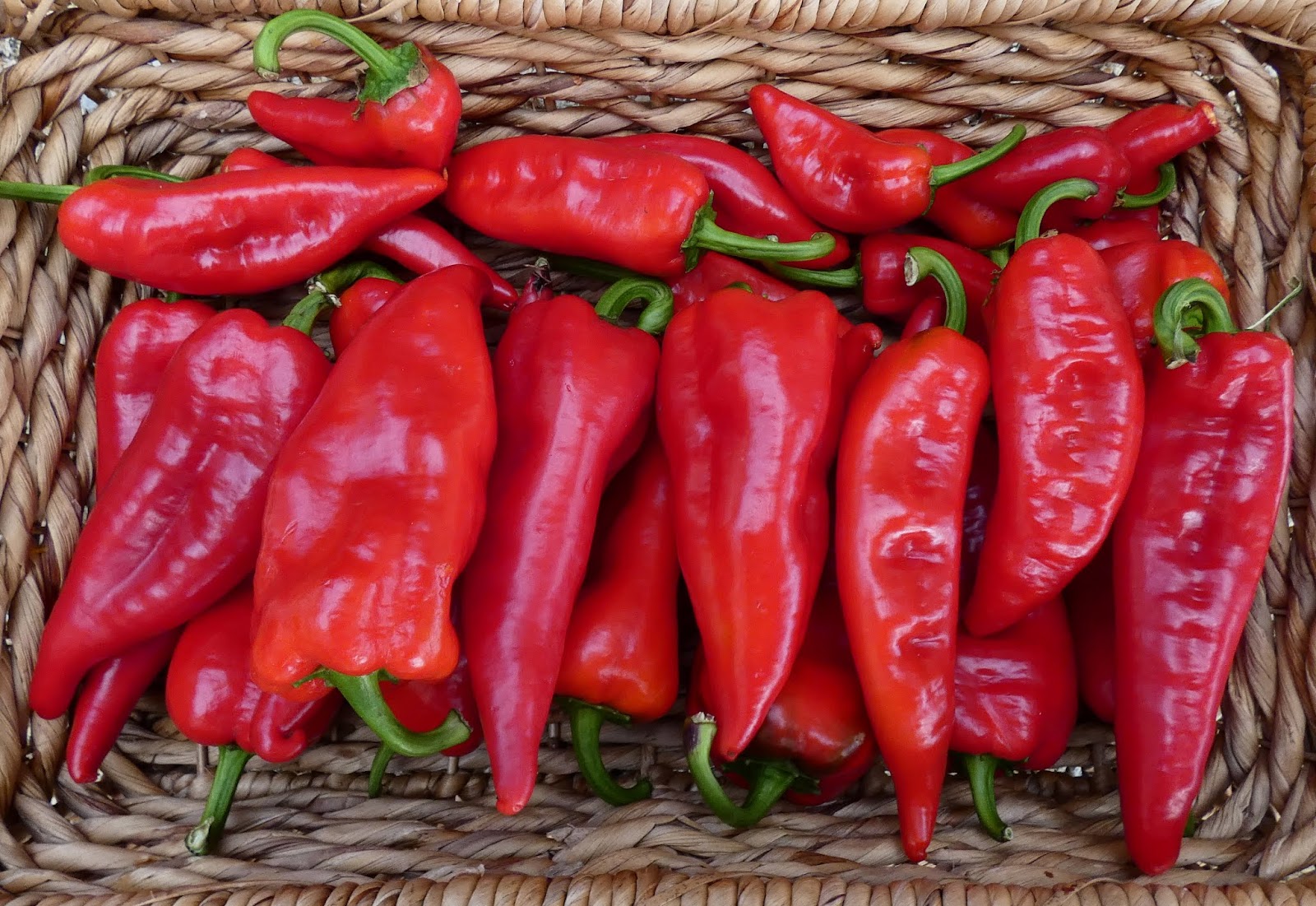 |
| Florina |
I've been searching for a good yellow fleshed pepper for a long time. Most of the ones I've grown have had mediocre flavor or other failings. Topepo Giallo is one of the best so far. It's mostly squat squash shape and thick flesh makes it great for stuffing and roasting but it is also good eaten fresh. It also dehydrates well. It seems that I'll have to save some seeds next time I grow them because my source no longer offers them.
 |
| Topepo Giallo |
Odessa Market is my favorite pepper for eating fresh. It has medium thick flesh with a thin skin and is incredibly sweet and flavorful. The plants are compact and productive. The immature peppers are lime green which really stands out and they are one of the few green peppers that I find to be tasty. I've noticed that seeds are not reliably available from year to year and this seems to be an off year so they may be hard to find.
 |
| Odessa Market |
I grow a number of chile peppers, not all of them hot, but my favorites are mostly Capsicum baccatums, which are native to the Andes where they are called Aji which means "pepper". Here you will usually see them redundantly called "Aji peppers". Their notable attribute is their aromatic fruitiness. I like to ferment them and turn them into hot sauces and pepper flakes. The plants are cold tolerant and will usually overwinter easily in my garden with minimal protection. Many of them are also late to ripen.
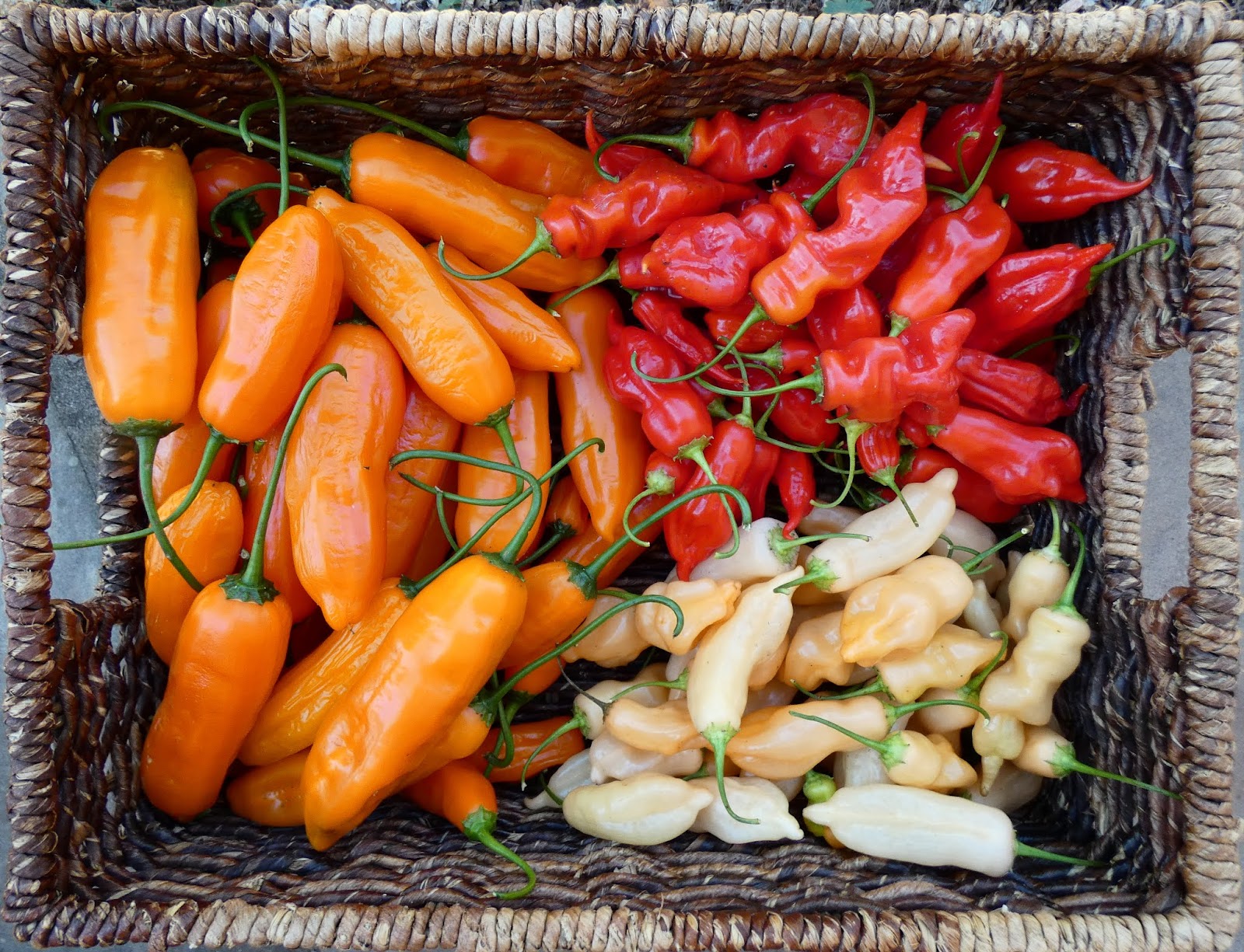 |
| Joe's Giant Aji, Sugar Rush Red, and Sugar Rush Peach |
I also experiment with
Capsicum chinense peppers on occasion. That branch of the pepper family includes the blazing hot Habanero peppers and other notable scorchers but I prefer their milder cousins. Unfortunately a lot of the chinense peppers are late to ripen and are not tolerant of cold weather so I usually don't get much of a harvest. One
chinense pepper that I've had fairly good success with is
Habanada, a completely mild habanero that has the aroma and fruitiness of it's spicy cousins that is usually undetectable to those of us who are pepper wimps. Another pepper that has become a favorite is a pepper from Ethiopia that goes by a few different names including Ethiopian Brown,
Mareko Fana, and Berbere. It has become a favorite of mine for making chile pepper flakes.
 |
Habanada, Aji Cacho de Cabra, Yellow Pointy,
Ethiopian Brown, Aji Angelo, Aji Amarillo Grande |
Thus ends the first year in the 4 year rotation through the beds in my garden. My next post in this series will cover year 2.
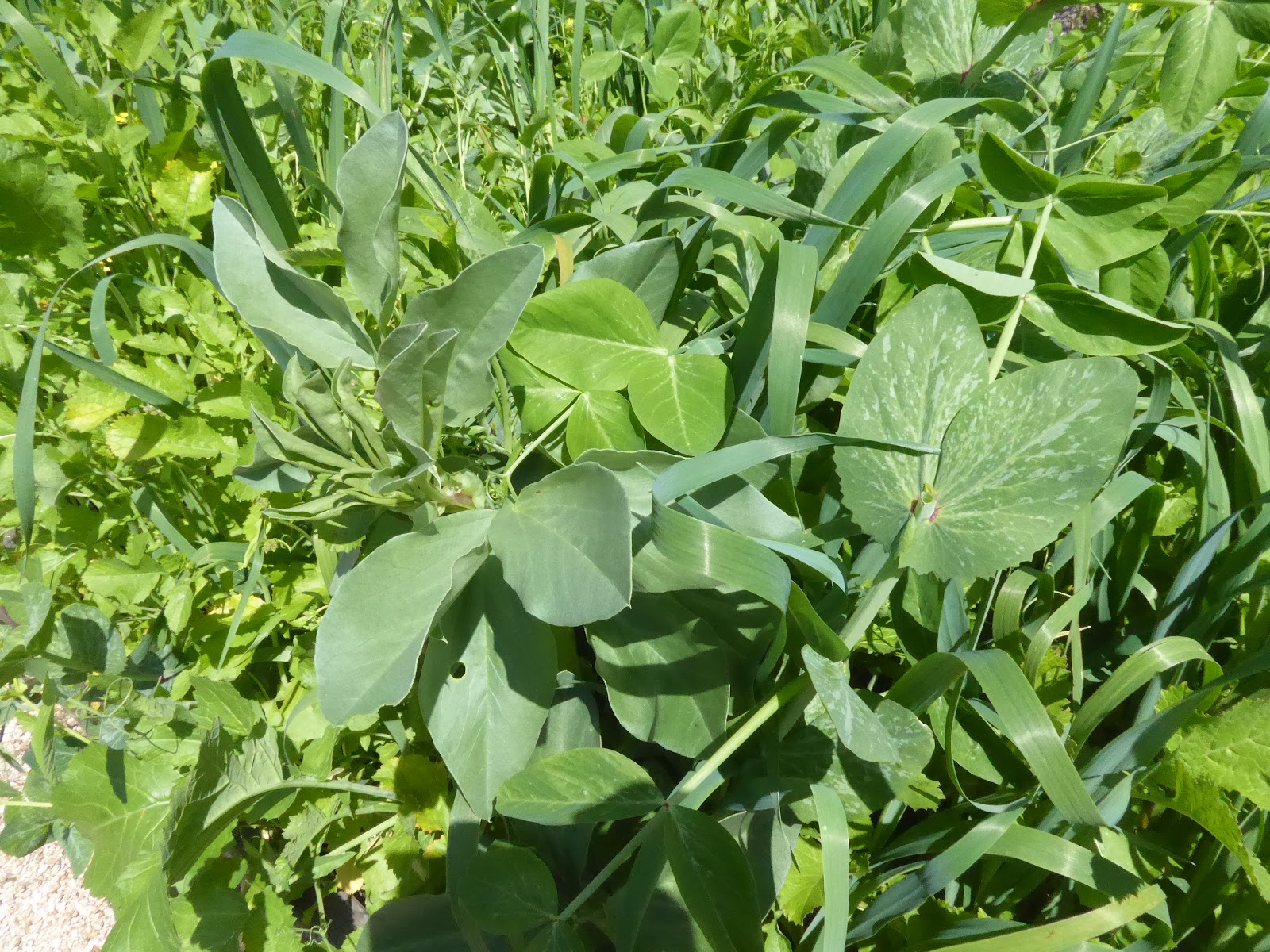
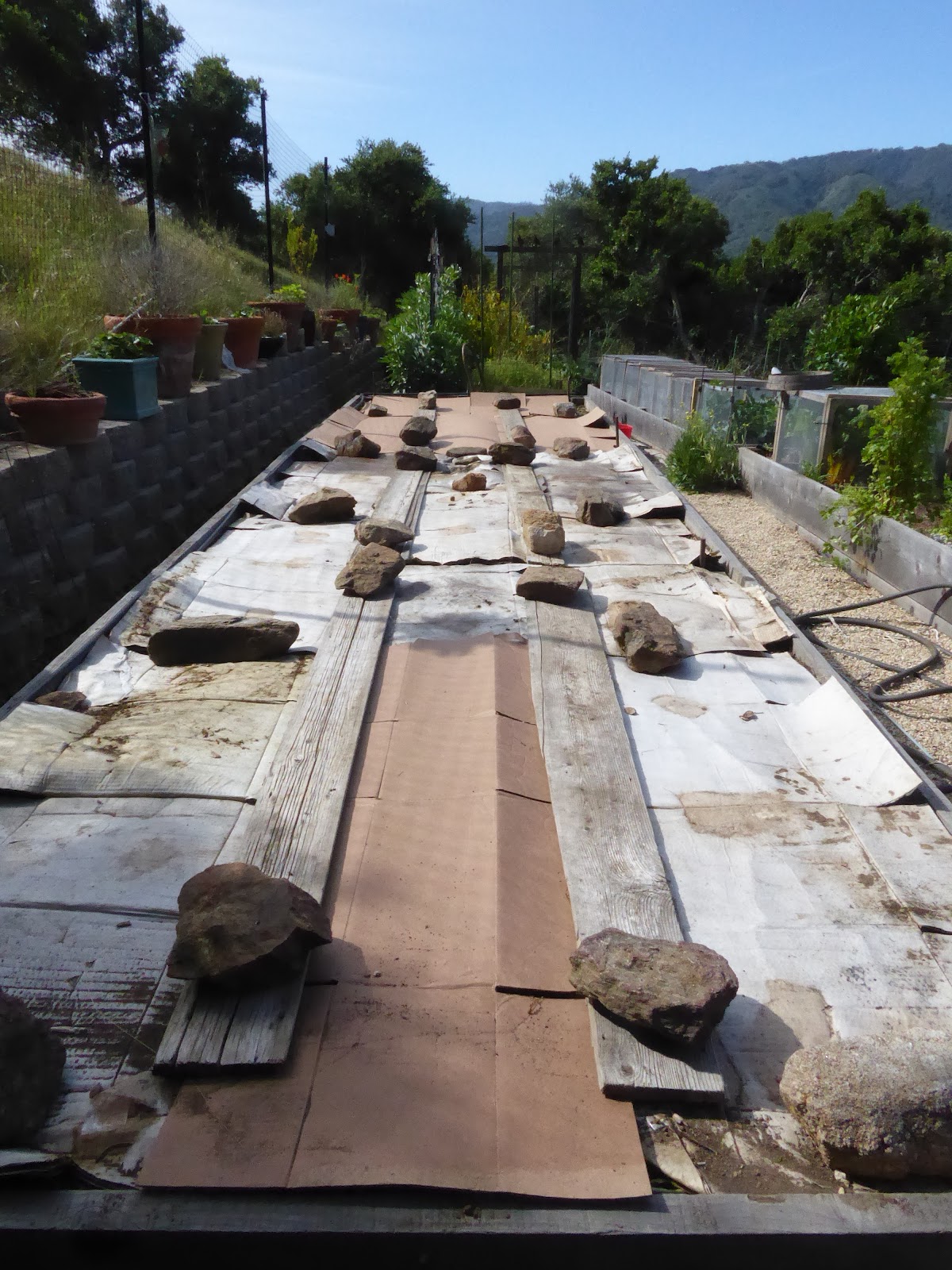

I'm quite sure you did OK. You were so well prepared. Plus you know your stuff! Your audience must have been drooling. I'm also quite sure they welcomed your comments as much as readers of your blog do. I'm glad you posted this; it gives me a better idea of what your garden looks like overall. I look forward to the future installments.
ReplyDeleteYou haven't washed down the hillside yet? My son fixed my rain gauge. I got 1.03 inches yesterday. Hurrah!
It actually hasn't been all that wet yet, the weather station that I watch in the Village is up to .7 inches for today and 1.11 inches for the week. Another station nearby registered even less. The big dump is supposed to be tomorrow.
DeleteCongrats on a successful presentation! I'm sure everyone was inspired and walked away with a few (or more!) tips that they will incorporate into their own gardens this season. Talks such as yours are truly wonderful as they focus on local conditions and you get to hear first hand how a seasoned gardener deals with the challenges that are specific to that area.
ReplyDeleteWell done onchallenging your comfort zone. I am always so amazed every time you post photos of all your peppers.
ReplyDeleteThank you Michelle for sharing so much about your garden. Many tips and tricks worthy of my consideration. Wish I could do some cover crops. Perhaps I should devote one of my four beds each winter. I have crops growing in all four beds year-round so would be reluctant to forego some veggies. Compost and amendments replenish the soil. My beds are all my own garden soil too. Plan to look into Azos and Mykos for my summer garden. I look forward to future installments of your garden talk. Thanks!
ReplyDelete